|
TRANSLATE THIS ARTICLE
Integral World: Exploring Theories of Everything
An independent forum for a critical discussion of the integral philosophy of Ken Wilber
  Frank Visser, graduated as a psychologist of culture and religion, founded IntegralWorld in 1997. He worked as production manager for various publishing houses and as service manager for various internet companies and lives in Amsterdam. Books: Ken Wilber: Thought as Passion (SUNY, 2003), and The Corona Conspiracy: Combatting Disinformation about the Coronavirus (Kindle, 2020). Frank Visser, graduated as a psychologist of culture and religion, founded IntegralWorld in 1997. He worked as production manager for various publishing houses and as service manager for various internet companies and lives in Amsterdam. Books: Ken Wilber: Thought as Passion (SUNY, 2003), and The Corona Conspiracy: Combatting Disinformation about the Coronavirus (Kindle, 2020). 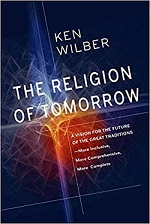 Frank Visser, CLIMBING THE STAIRWAY TO HEAVEN
Frank Visser, CLIMBING THE STAIRWAY TO HEAVENA 7-Part Review of Ken Wilber's The Religion of Tomorrow (2017) Part I: The Involution/Evolution Cosmology Part II: From Atom to Atman Part III: A More Adequate Spectrum of Colors? Part IV: What Is It Like to Be a Super-Nova? Part V: Rational Reasons to Believe in Spirit? Part VI: Is Darwin Really 'On Our Side'? Part VII: Climbing the Stairway to Heaven THE WHOLE SERIES: FREE DOWNLOAD AS PDF Review of "The Religion of Tomorrow", Part IV
What's It Like
|
|||||||||||||||||||||||||||||||||||||
| STATE OF CONSCIOUSNESS | LEVEL/STAGE/SHEATH OF CONSCIOUSNESS | BODY-ENERGY/REALM |
|---|---|---|
| Deep Sleep | Ananda-maya-kosha | Causal body |
| Dreaming |
Vijnana-maya-kosha Mano-maya-kosha Prana-maya-kosha |
Subtle Body |
| Waking | Anna-mayakosha | Gross Body |
| UPPER LEFT | UPPER RIGHT |
|---|---|
|
causal mind |
causal body |
|
subtle mind |
subtle body |
|
gross mind |
gross body |
|
Gross body-mind, subtle body-mind and causal body-mind in the two Upper Kosmic Quadrants. |
|
Wilber on our minds and bodies
In his latest book The Religion of Tomorrow (2017) Wilber touches on the mind-body problem in several sections throughout the book, and gives his current views on these philosophical topics.
Here's the first passage to consider, in which he brushes aside the mind-body problem rather lightly:
"The 'mind/body' problem is not a real problem for Buddhism or any of the nondual traditions"? We don't have a problem figuring out how a radio signal and its content fit together, because this is a case of information being carried by a material substrate. We could as well give the example of a written word and its meaning. We can easily see and understand these different aspects of these scribbles on paper: their physical characteristics and their meaning (to us). But of course, this presupposes the existence of a reading mind, so does not clarify in the least how mind and body are related. With our bodily senses we perceive the printed words, but with our minds we understand their meaning (provided we understand the language in which the word has been written. If not, the scribbles are gibberish to us). The mind-body problem, in contrast, relates to the problem of how physical processes in the brain can produce or correlate with consciousness, and vice versa. Words don't read themselves, nor do radio signals hear themselves. It is an interesting fact that communication always has to use physical substrates, but it doesn't throw any light on the nature of mind or consciousness in the least. (And if it did, it would provide evidence for some kind of materialism or functionalism: many different physical carriers can transmit the same information).
A second rather casual comment by Wilber is even more debatable:
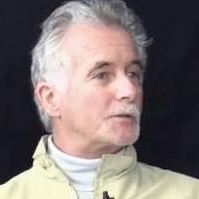
Christian de Quincey
"A mind/body duality is never a problem here"? If for the moment we forget about ontological realms and subtle mass-energy forms—more on that later—introducing multiple minds and bodies doesn't solve the mind-body problem, it multiplies it. We now have, at least, a triple mind-body problem to solve! Wilber seems to have trouble understanding that his "solution" to the mind-body problem is not so much a solution as it is a restatement of the oringal knotty problem. Assigning the mind to the Upper-Left quadrant and the body to the Upper-Right quadrant—to use some AQAL-ese—doesn't clarify how these two realities are actually related and can impact eachother in the least. The good thing about Wilber's AQAL model is that at least these two experiential realities (inner and outer) are put on the integral map—but that should be the start of an explanation, and not be mistaken for one. When Wilber's views on the mind-body problem were criticized by philosopher Christian de Quincey in the Journal of Consciousness Studies (2000), for not really having solved the mind-body problem, but only having created a smoke screen of conceptual subtleties and distinctions—precisely how, and not only that the mind affects the body and vice versa is the problem—the ensuing philosophical debate between the two gentlemen was far from agreeable, to put it mildly.[9]
A slightly more precise statement of Wilber's current position regarding the mind-body problem seems to be this quote from The Religion of Tomorrow, which can be found practically near the end of the book:
"Identity thesis" is the technical term for materialism, "dualism" is the belief in a bodiless soul. Here, Wilber clearly seems to subscribe to some form of double-aspect theory or neutral monism: mind and body are two different aspects of one and the same underlying reality, "an underlying Wholeness". The Stanford Encyclopaedia of Philosophy actually gives five different versions of this "neutral" point of view.[10]
We leave these subtleties for now. What could this third, or "basic entity" possibly be? Wilber's "underlying Wholeness" (Spirit?) doesn't make us any wiser in this respect.[11] Given his penchant for "transcend-and-include" types of argumentation, he will probably find some transcendental formulation out of this, but it would have served his cause better if he had fleshed out his philosophical position respecting the current positions in the field. Just how an underlying "Wholeness" can "intrinsically be both mental and physical" sounds hardly as a satisfactory solution to the mind-body problem. For Wilber, however, this is an acceptable solution. Discussing how an immaterial mind can possibly move a material body around, he concludes:
How two realities as different as mind and body can be "simply two different aspects of the same thing" is beyond me—even if that "thing" is Spirit itself. We are, in fact, back to square one if you ask me.
The three fundamental options
When introducing Ken Wilber's integral point of view at the recent Big History conference (July 2016) in Amsterdam, I touched on the mind/body problem briefly as well[12]. I will just quote from that paper to present my own view of things:
We have encountered the distinction between interior and exterior reality a few times by now, and we run here smack into the notorious mind-body problem. Is there such a thing as "mind"? Are we not "just" a brain? Or is this purely a matter of what we choose to see? In his book Integral Psychology (2000) Wilber has discussed this philosophical conundrum in a fresh and innovative way. He first suggests that there are basically two options in this area: (1) the pre-modern or dualistic idea of a soul, which is independent of the body, and (2) the modern or monistic conception which allows only for the existence of the body/brain. None of these viewpoints have resulted in an intelligible conception of consciousness. The dualistic position is incapable of clarifying how an immaterial soul could ever influence the material body, and vice versa. Except in some fundamentalist religious quarters no one believes this anymore. But the opposite view of monistic materialism fares no better. Nobody in the world have as of yet been able to clarify how consciousness can arise out of material brain processes. It just does not make sense. Body and brain secrete many substances, but consciousness is not one of them. Often the term "emergence" is used here to wave aside this problem, as if consciousness emerges whenever brains have become complex enough, but this is not the same as giving a rational explanation.
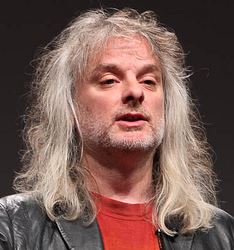
David Chalmers
In some areas of philosophical thought a third option has been proposed, that avoids the extremes of both dualism and monism. It has variously been called "double-aspect theory" or "dual-aspect theory" or "neutral monism". Thomas Nagel, a philosopher who shows many affinities with Wilber (minus the spiritual dimension), is a case in point. The idea here is that both mind and body, whatever they are, are two aspect of a third Something. Wilber's "solution" might be classified as belonging to this category. For him, the Left- and Right-Hand quadrants always go hand in hand, and are aspects of Spirit. Of course, while this may look balanced and gives equal due to both interior and exterior reality, it runs head-on into the problem of what this third Something could possibly be? What on earth (or heaven) can have such different aspects as mind and body, given that they have such a different ontology? We are back to square one here, in my opinion, and are faced with a massive lack of understanding. Philosopher of mind David Chalmers[13] has remarked that the mind-body problem isn't solved at the moment, in the sense that there is no proposed solution that has been accepted by all members of this community.
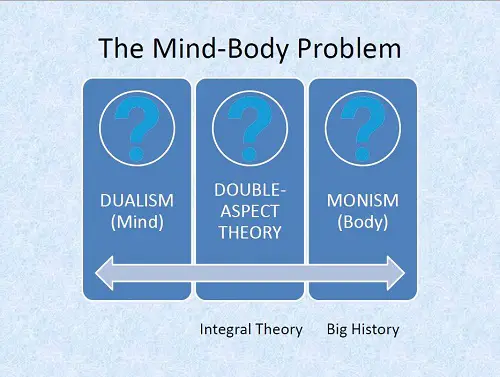
Wilber has made the observation that most if not all views on the mind-body problem have taken only the Upper quadrants into account (mind and mody), but not the Lower quadrants of culture and society, which equally impact the nature of consciousness. His model would therefore have to be classified as a "tetra-aspect" model of consciousness.
COSMIC CONNECTIONS
In another quote relevant to the mind-body problem, Wilber goes into more esoteric detail about the workings of consciousness and its "coverings". In a rather confusing story, he argues that,
There was a time when I was deeply into this "subtle bodies" thing[14], and from those days I remember that koshas, kayas, sheaths, realms or subtle worlds have a slightly different connotation, at least if we follow the Western esoteric, Theosophical interpretations, which I happen to know best. "The realms, or bodies, are 'concrete' mass-energy dimensions" is a very confused statement, for "bodies", physical or super-physical, are understood in the esoteric traditions as "vehicles of consciousness" for their respective "worlds", physical or subtle. As we perceive the physical world through the senses that are part of our physical bodies, it is through the senses in our subtle bodies that we perceive higher or more subtle worlds (for example the "astral world"). It doesn't really help to conflate bodies and realms/worlds—that is, only if one wants to downplay the reality of these worlds and reduce them to "life worlds" of conscious subjects. Nor is saying "the 'minds' or 'states' (or 'sheaths') are the nonmaterial awareness components" very helpful either, for the "sheaths" are said to be "coverings" that can be organized into "bodies", by excercising their mental faculties (just as we build our physical bodies by working out, i.e. putting conscious effort into using our muscles).[15] It's also not so much that we supposedly have multiple minds and bodes, but one Self which is clothed in many bodies, physical and super-physical. This equally doesn't solve the mind-body problem, for states the problem a little bit differently.
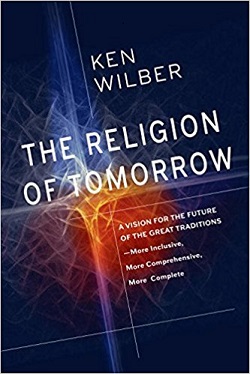
Hardcover, Shambhala, 2017, 806 pages.
The fact that these bodies "get, or course, subtler and subtler" has never been clarified by Wilber within his post-metaphysical AQAL model. As long as the Upper-Right quadrant is defined as related to physical reality and our waking consciousness, these subtle realms and bodies don't fit, but if we expand it to cover all possible worlds or realities, they might fit very well. To claim that auras, chakras and the like can be seen "with subtler awareness", goes wholly against the esoteric understanding that auras and subtle bodies are typically seen by others, i.e. clairvoyants. Normally, you don't see/feel your own aura, but aura descriptions of other people abound in the occult literature. Again, Wilber has subjectivized these occult realities to fit his psychological model. The fact that we don't doubt the existence of mental phenomena, even if we can't put our finger on them, suggests that these "non-physical" phenomena are realities in their own right. The current AQAL model is obviously geared towards the world we perceive in our waking state of consciousness. This is both pragmatic and practical. In the occult or esoteric worldview, these more subtle phenomena of mind and soul are seen as non-physical, or super-physical if you want, but definitely not as "non-local", as the current buzz-word has it.[16] My thoughts and feelings, or even mystical experiences, might not be localizable in the sensory world, but they definitely don't exist completely some place else either, as I clearly feel them "behind my eyes" or "in my gut". It's easy to say that "heaven is a state, not a location", for states need to be located somewhere, to function in embodied, individualized form.
In The Religion of Tomorrow Wilber flies really high when describing the benefits and challenges of the super-integral stages and states of mystical consciousness, culminating into Supermind. Here's just one example out of many:
If the final end of our spiritual development, following Wilber's guidelines, enables our self-consciousness to include "every distant supernova, galaxy, and solar system", the question raised by Nagel effectively would become: What Is It Like to Be a Supernova? It's obvious that playing the game like this, Wilber loses the small chance he had to find a hearing for his solution of the mind-body problem.
We might well stay on firmer ground when solving the mind-body problem before we venture into such far-out (or delusional?) states of mind. Wilber makes much of the fact that super-integral stages often deny aspects of the "relative" world, which results in pathologies that should be cured by adopting the Integral View. He also discusses the rise of the so-called "New Atheists (Dawkins, Hitchens, Dennett and Harris) and suspects that most of them suffer from shadow issues related to their own repressed spirituality. Here's a telling comment by Wilber: "These attacks [against religion] are rabidly antispiritual..., and the 'frothing at the mouth' nature of their attacks is a dead giveaway to the projected shadow material driving it." (p. 318-9). Ironically, when one reads the often emotional statements Wilber has made about neo-Darwinism and its incapacity to explain Nature's complexities, one is fully entitled to return the compliment and wonder what shadow issues are related to that? Does Wilber perhaps deny the possibility that there is in the end no cosmic force towards complexity and consciousness in nature and culture? We could therapeutically advise him:
"There is no Eros in the Kosmos. The notion of Eros can't explain shit. Deal with it."
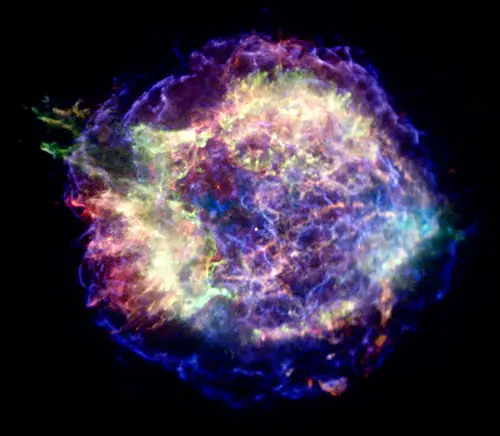
NOTES
[1] Thomas Nagel, "What's It Like to Be a Bat?", The Philosophical Review, October 1974.
[2] Dennett, Daniel C. (1991). Consciousness Explained. Boston: Little, Brown and Company, p. 441. Quoted on Wikipedia, "What's It Like to Be a Bat?".
[3] Thomas Nagel, Mind and Cosmos: Why the Materialist Neo-Darwinian Conception of Nature is Almost Certainly False, Oxford University Press, 2012. For a review see: Frank Visser, "Biased Toward the Marvelous?: Integral Reflections on Thomas Nagel's Mind and Cosmos", www.integralworld.net
[4] Ken Wilber: "Instead of a religious preacher like Dawkins, start with something like Michael Behe's Darwin's Black Box: The Biochemical Challenge to Evolution. And then guess what? Neo-Darwinian theory can't explain shit. Deal with it." "KW Responds", Vomiting confetti, Friday, May 27, 2005 (now offline). And in The Religion of Tomorrow: "In some ways, [Intelligent Design] arguments correctly identify several of the inadequacies of the standard, modern Neo-Darwinian view. (I don't want to be obnoxious, but it's not like that's hard to do.)" (p. 305). "Identifying inadequacies" of a model is, of course, not the same as arguing in favor of supernaturalism.
[5] "The universe is slightly tilted toward self-organizing processes, and these processes... escape present-level turmoil by jumping to higher levels of self-organization, and I see that 'pressure' as operating throughout the physiosphere, the biosphere, and the noosphere." See: "Re: 'Some Criticisms of My Understanding of Evolution'", www.kenwilber.com, December 04, 2007
[6] Ken Wilber, Integral Psychology, Consciousness, Spirit, Psychology, Therapy, Shambhala, 2000, Chapter 14, "The 1-2-3 of consciousness studies", p. 174-187. According to Wilber, the unity of mind and body can only be disclosed in contemplation, by the "eye of spirit". "In the disclosure known as satori, for example, it becomes clear that the subject and object are two sides of the same thing, that inside and outside are two aspects of One Taste. How to relate them is not the problem, according to the clear consensus of the many individuals who have tapped into this wave of development. The problem, rather, is that this genuinely nondual solution is not something that can be fully grasped at the rational level." (p. 181). So it is more correct perhaps to state that, rather than solving the mind-body problem, Wilber has, in his own words, "dissolved" it.
[7] Ken Wilber, "Towards a Comprehensive Theory of Subtle Energies, Except G", www.kenwilber.com, 2003/2006. "Forgive me for repeating myself, but the staggering brilliance of this scheme continues to just floor me. There are no other models even remotely like it in explanatory capacities, and I have incorporated those aspects, virtually unchanged, in my own model of Integral Psychology." (p. 40)
[8] Frank Visser, "Subtle Bodies, Higher Worlds", January 2004, www.integralworld.net.
[9] In chronological order, these were the Wilber-De Quincey exchanges:
- Ken Wilber, "Waves, Streams, States and Self: Further Considerations for an Integral Theory of Consciousness", Journal of Consciousness Studies , 7, no. 11-12, November-December 2000. reposted on www.kenwilber.com
- Christian de Quincey, "The Promise of Integralism, A Critical Appreciation of Ken Wilber's Integral Psychology", Journal of Consciousness Studies, 7, no. 11-12, November-December 2000, p. 177-208 (available from web.archive.org).
- Ken Wilber, "Do Critics Misrepresent My Position? A Test Case from a Recent Academic Journal", www.kenwilber.com, 2000
- Christian de Quincey, "Critics Do. Critics Don't. A Response to Ken Wilber", www.deepspirit.com, 2000 (available from web.archive.org).
De Quincy was quite clear in his verdict: "I will argue that Wilber's model doesn't even begin to offer a solution to this perennial 'world knot' as Schopenhauer called it, and furthermore that this omission seriously undermines the rational integrity of his four quadrant system. Instead of explaining how the interior and exterior domains relate and interact, Wilber asks us to be content with promissory integralism." ("The Promise of Integralism").
See also: Frank Visser, "The Mind-Body Problem: Helpful Hints from Integralism and Perennialism", August 2005, www.integralworld.net. From which:
| Different meanings of "the mind-body problem" according to Wilber | ||
| MEANING 1 | MEANING 3 | MEANING 2 |
|---|---|---|
| SELF | SUBJECT | BRAIN |
| FELT BODY | OBJECT | BODY/ORGANISM |
| "INTERNALIZED" | "THE WORLD KNOT" | "EXTERNALIZED" |
[10] "Neutral monism", Stanford Encyclopedia of Philosophy, plato.stanford.edu. From which:
What does it mean for an entity to be neutral? Here are five proposals:(1)–(5) are not always clearly distinguished; but even when they are, two or more of these criteria may be used concurrently. This invites confusion on the part of the neutral monists, as well as their critics.
- The Neither View: A basic entity is neutral just in case it is intrinsically neither mental nor physical.
- The Actual Constituent View: A basic entity is neutral just in case it is a constituent of both physical and mental non-basic entities.
- The Possible Constituent View: A basic entity is neutral just in case it can be a constituent of both physical and mental non-basic entities.
- The Law View: A basic entity is neutral just in case both mental laws and physical laws are applicable to it.
- The Both View: A basic entity is neutral just in case it is intrinsically both mental and physical.
[11] Similar thoughts can be found in: Anne Besant, A Study in Consciousness: A Contribution to the Science of Psychology, The Theosopical Publishing House, 1904. "Awareness is essentially awareness of limitation, and only secondarily awareness of others. This abstract Twain-in-One, consciousness-limitation, spirit-matter, life-form, are every inseparable, they appear and disappear together; they exist only in relation to each other; they resolve into a necessarily unmanifest Unity, the supreme synthesis... To say this is not to materialize consciousness, but onlyto recognize the fact that the two primary opposites, consciousness and matter, are straitly bound together, are never apart, not even in the highest Being. Matter is limitation, and without limitation, consciousness is not. So far from materializing consciousness, it puts it as a concept in sharp anti-thesis to matter, but it recognizes the fact that in an entity the one is not found without the other." (p. 27, 29)
[12] Frank Visser, "Big History and Integral Theory, Bill Bryson Meets Ken Wilber", Paper presentated at the third International Big History Association Conference, University of Amsterdam, July 17th, 2016.
[13] When I submitted Wilber's paper "An Integral Theory of Consciousness" (Journal of Consciousness Studies, 4 (1), February 1997, pp. 71-92) to David Chalmers' huge online philosophy of mind online repository (http://consc.net/online/, now offline) some years ago, he filed it under "Miscellaneous"—hardly a sign of recognizing it as a world-shattering solution to the age-old mind-body problem. Chalmers' comment is from: David Chalmers, et al., Mind and Consciousness: 5 Questions, Automatic Press, 2008, http://consc.net/papers/five.pdf (now offline).
[14] Frank Visser, "Views of Human Nature", Chapter 2 of Seven Spheres, Theosophical Publishing House Amsterdam, 1995.
[15] Annie Besant, A Study in Consciousness. "We must distinguish between the primary work of the organization of the mental and astral vehicles that fits them to be transmitters of part of the consciousness of the Spiritual Man, and the later work of developing these same vehicles into independent bodies, in which the Spiritual Man will be able to function on their respetive planes." (p. 194)
[16] In my opinion, expanding and complicating the AQAL model to include "non-local" realities of consciousness, as some have argued for, opens the door to unrealistic extrapolations of phenomena from quantum physics (e.g. non-locality) to areas such as the creative force behind evolution, mystical consciousness, life after death and parapsychology. (In The Religion of Tomorrow Wilber seems to be able to go all along to the very mystical end very well with his current model.) See: Lex Neale, The AQAL Cube: A Second Tier Differentiation Of Ken Wilber's AQAL Square, www.integralworld.net
